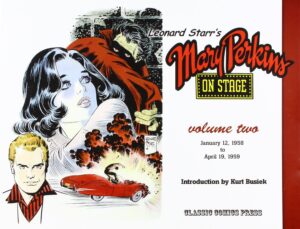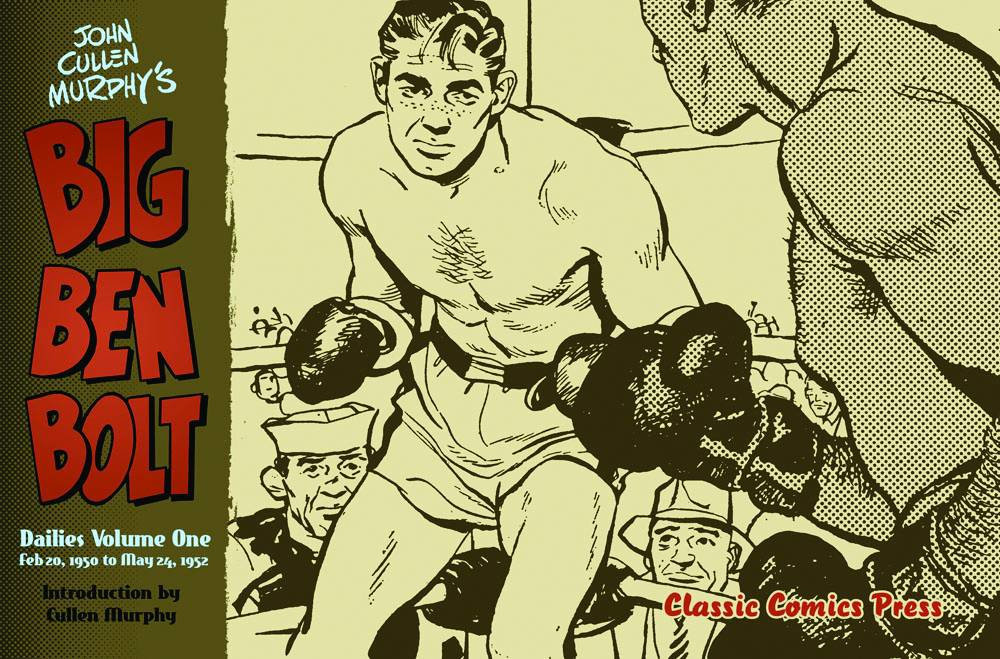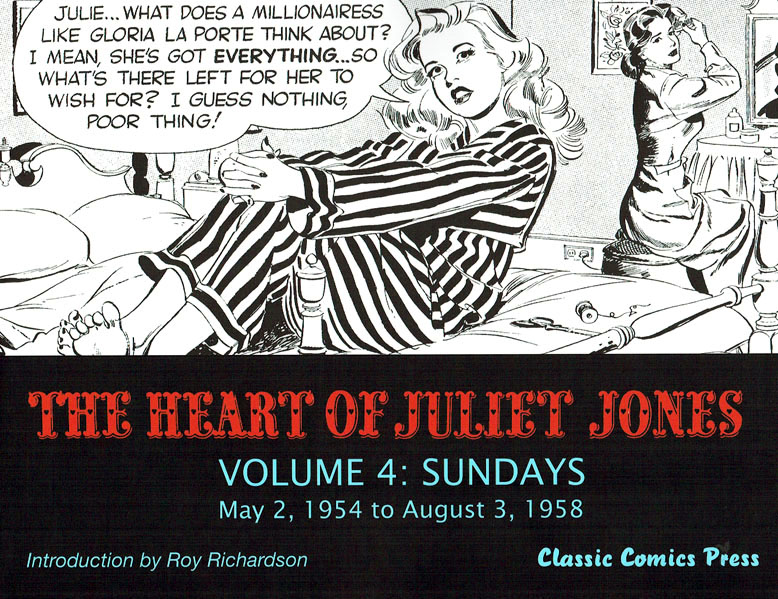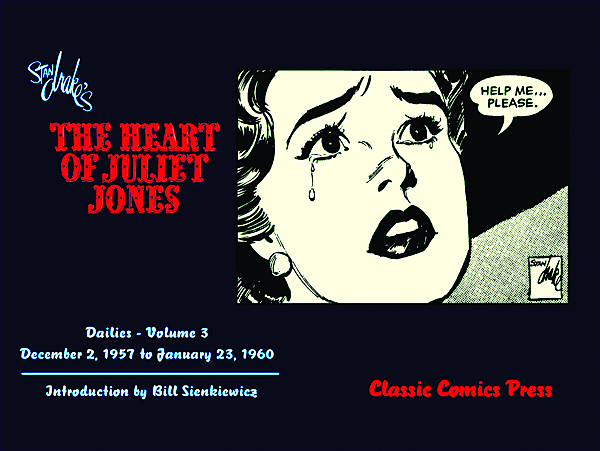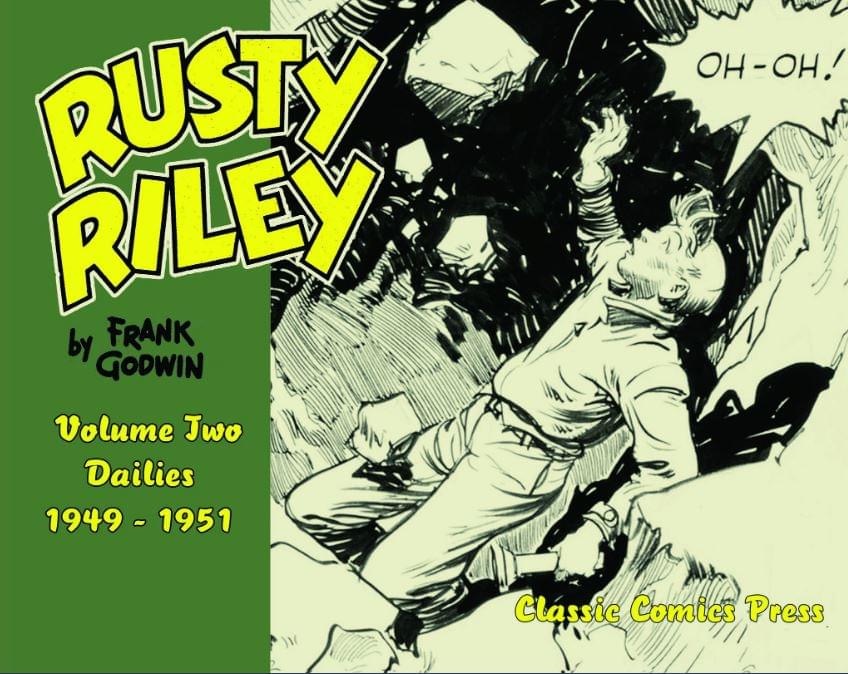In Volume 1 we reprinted the first three storylines from this classic Reuben award-winning comic strip. With Volume Two we continue our reprinting of the complete run of Leonard Starr’s Mary Perkins On Stage with six complete storylines from 1958 and 1959. With an introduction by Kurt Busiek. Dailies & Sundays – January 11, 1958, to April 19, 1959.
- Classic Comics Press, December 2007
- ISBN: 978-1424326624
- 11″ x 8.5″, 212 pages, softcover
- $21.95 USD
- Order online: Amazon, AbeBooks, Biblio
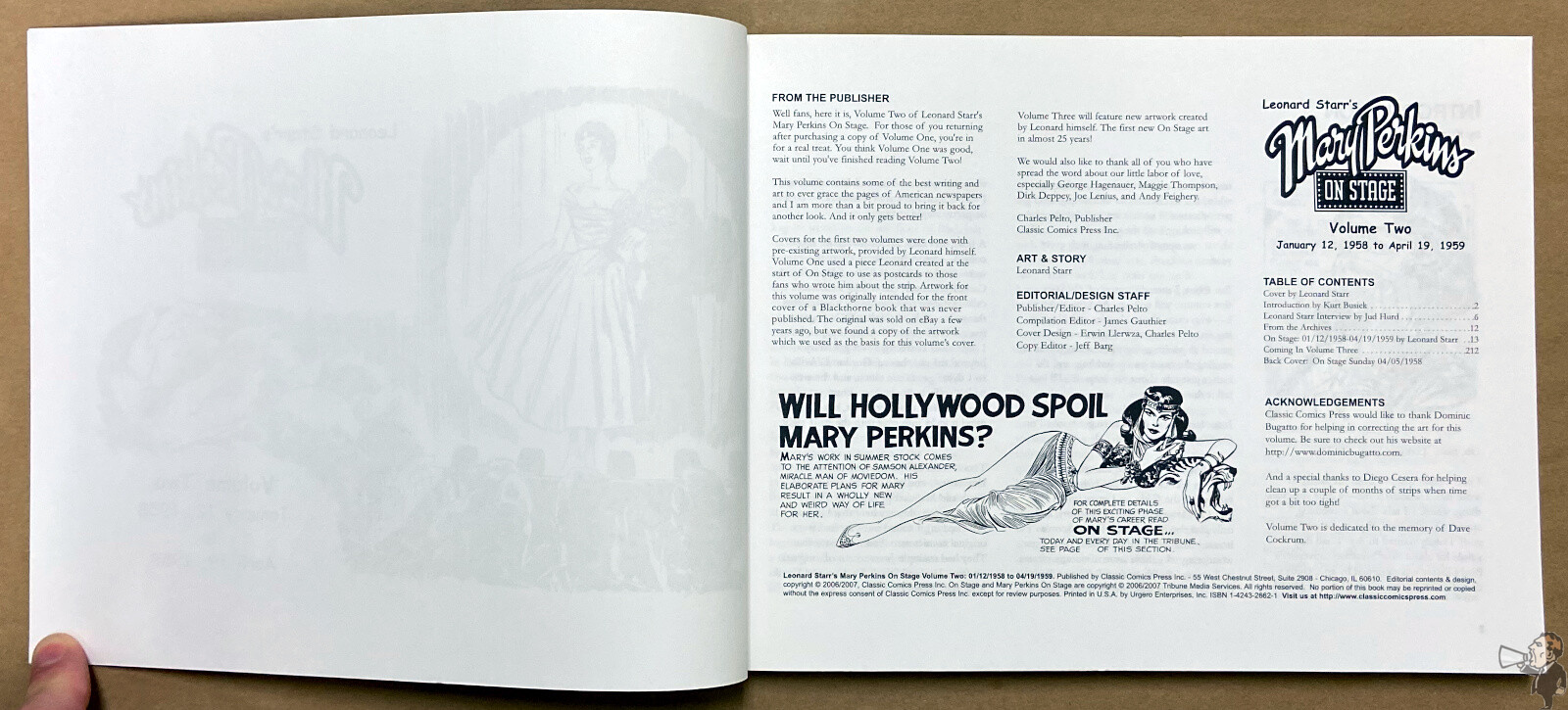
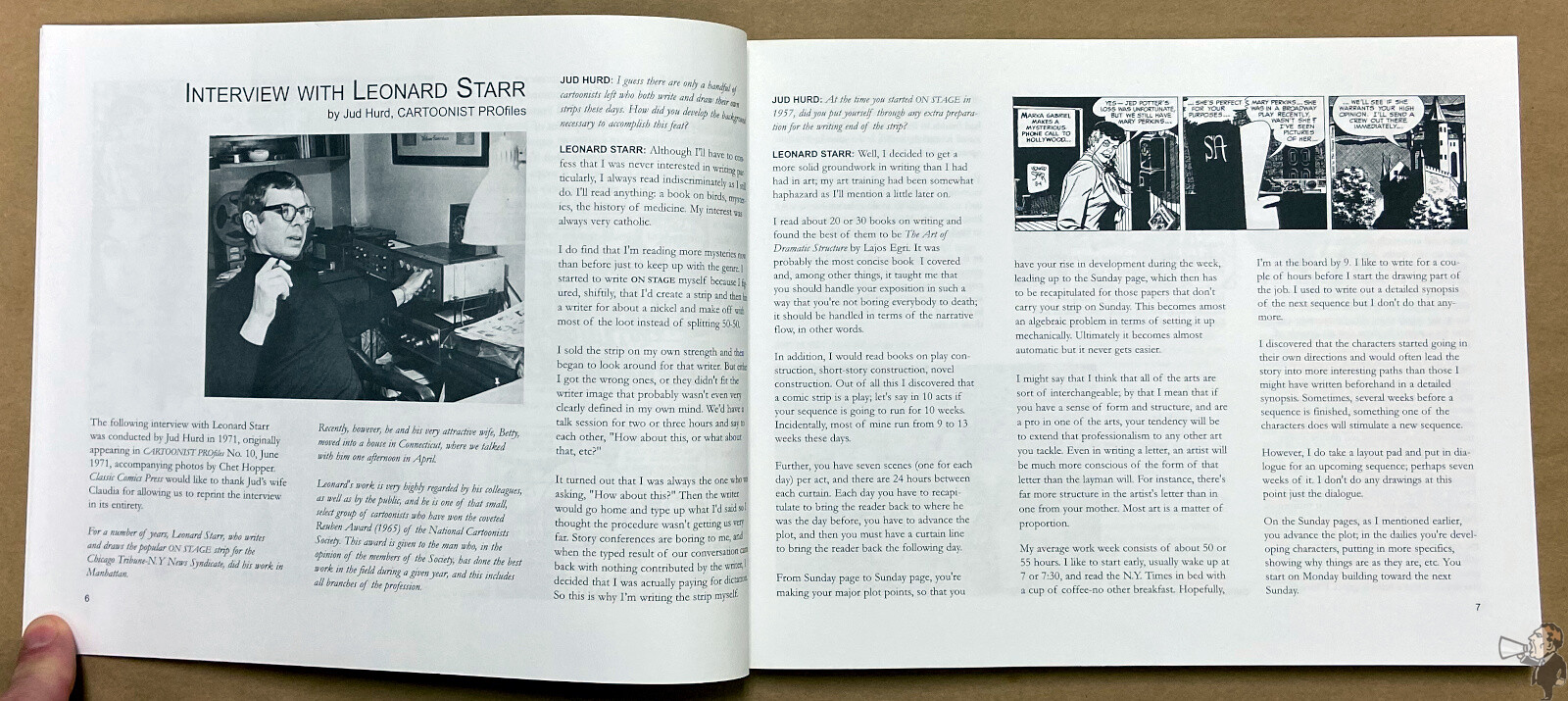
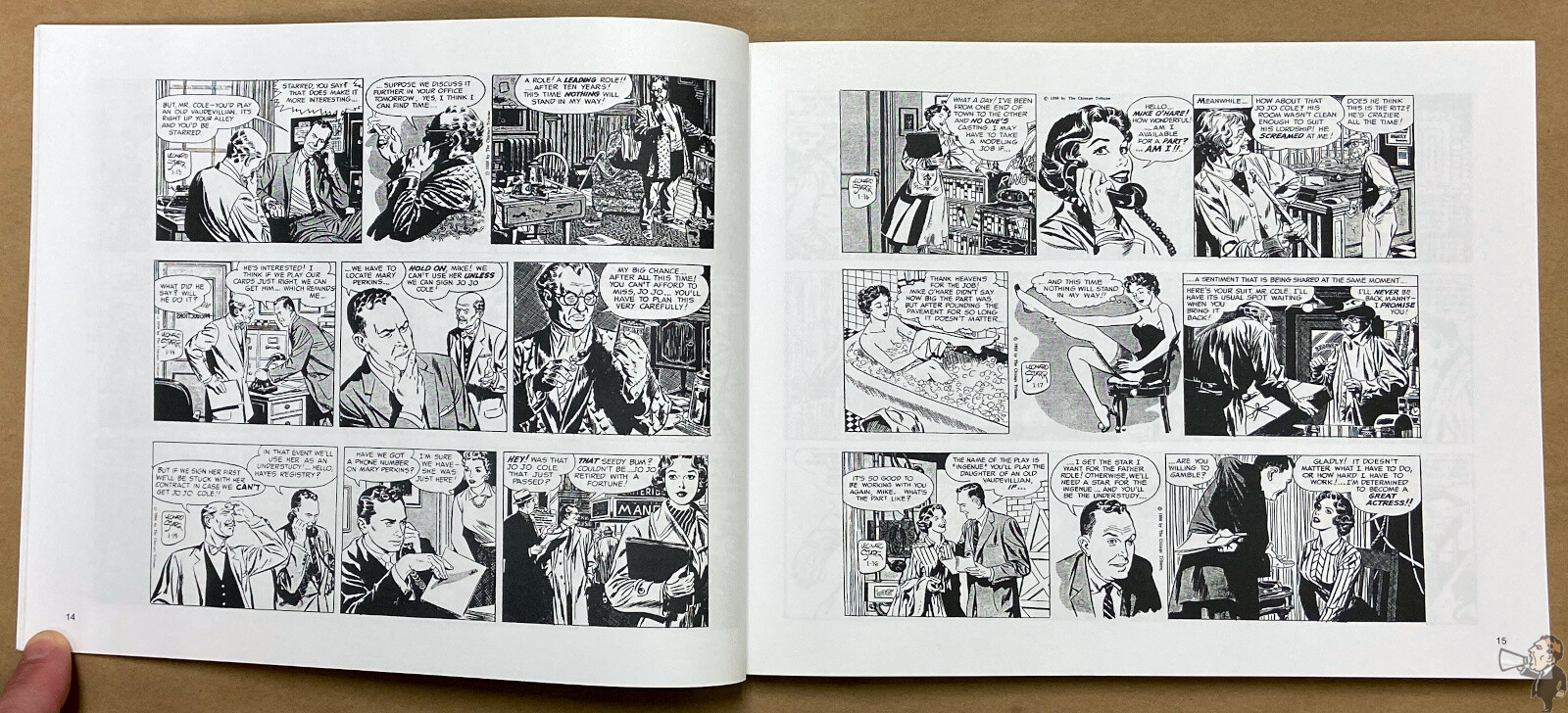
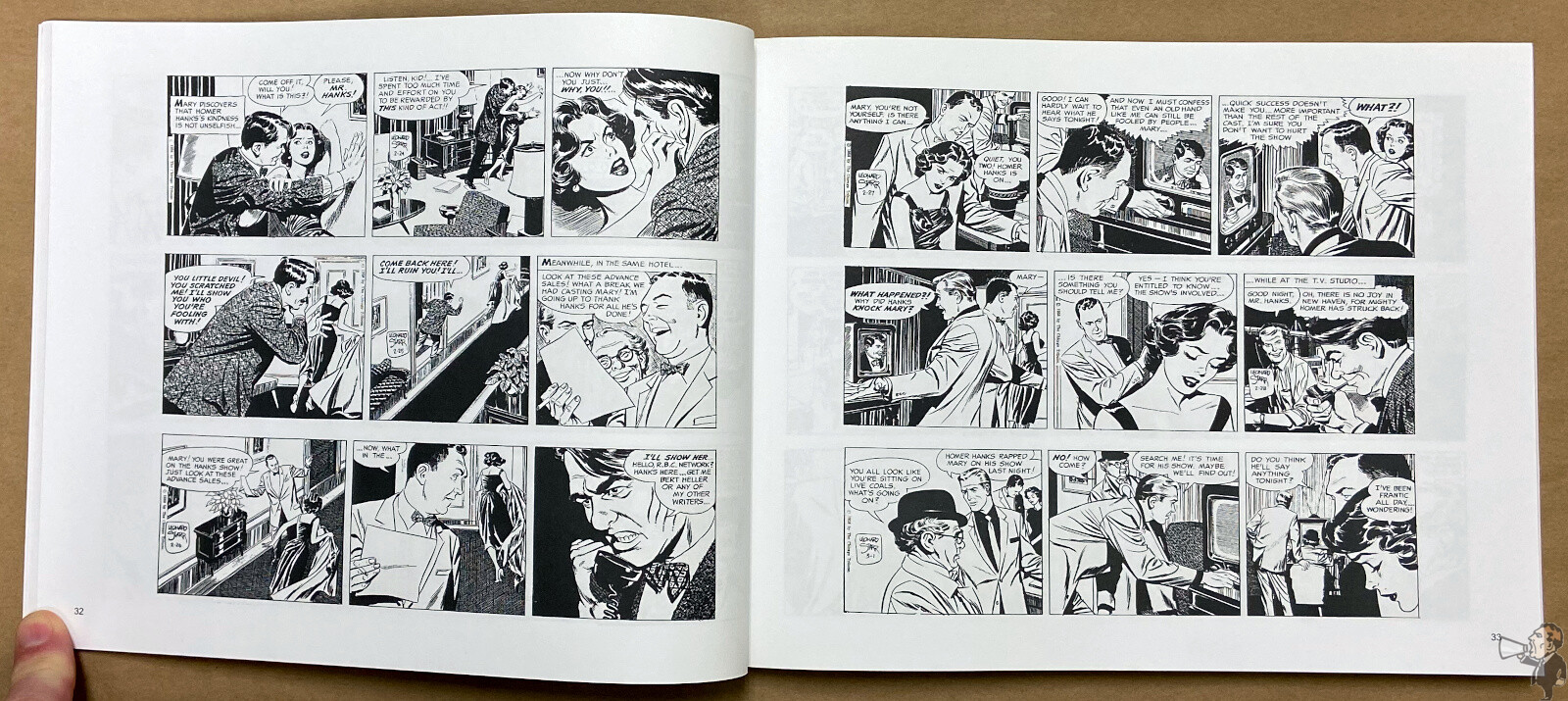
What I appreciate most about Starr’s storytelling here is how well each story flows into the next. There aren’t any awkward cuts or transitions: he works the next story into the current one so it feels like a natural extension. Six stories that read as a continuous tale, as they should be since this is Mary Perkins’ life.
We begin with Mary on the hunt for another role, this time finding herself in a small stage performance with an old vaudeville comedian Jo Jo Cole. While dealing with his transition from has-been to fatherly protector, Mary gets drawn into television host Homer Hanks’ web of backstabbing and innuendos. This is a wonderful dichotomy as we watch Cole evolve from curmudgeon to valued cast member and friend contrasted against Hanks devolving from charming television personality and friend of the theatre to sexual predator.
During auditions Mary takes a young girl under her wing and helps her get to grips with life in the big city. Magnolia has an odd style and an even odder attachment to her old suitcase. A large man starts following Mary and a prison break bring it all together in the “action” story of this volume. A good “whodunnit” with some flair and fisticuffs.
Jed Potter, young actor, enters the scene at the police station and ends up joining Mary for summer stock. He’s a natural but has issues with his father, so he has a “rebel without a cause” attitude towards those around him. Mary works her magic and we see the bad boy develop as he tries to work out his family relationship. It ends in tragedy, but Starr slowly peels the onion’s layers to reveal the humanity or lack thereof in the acting community.
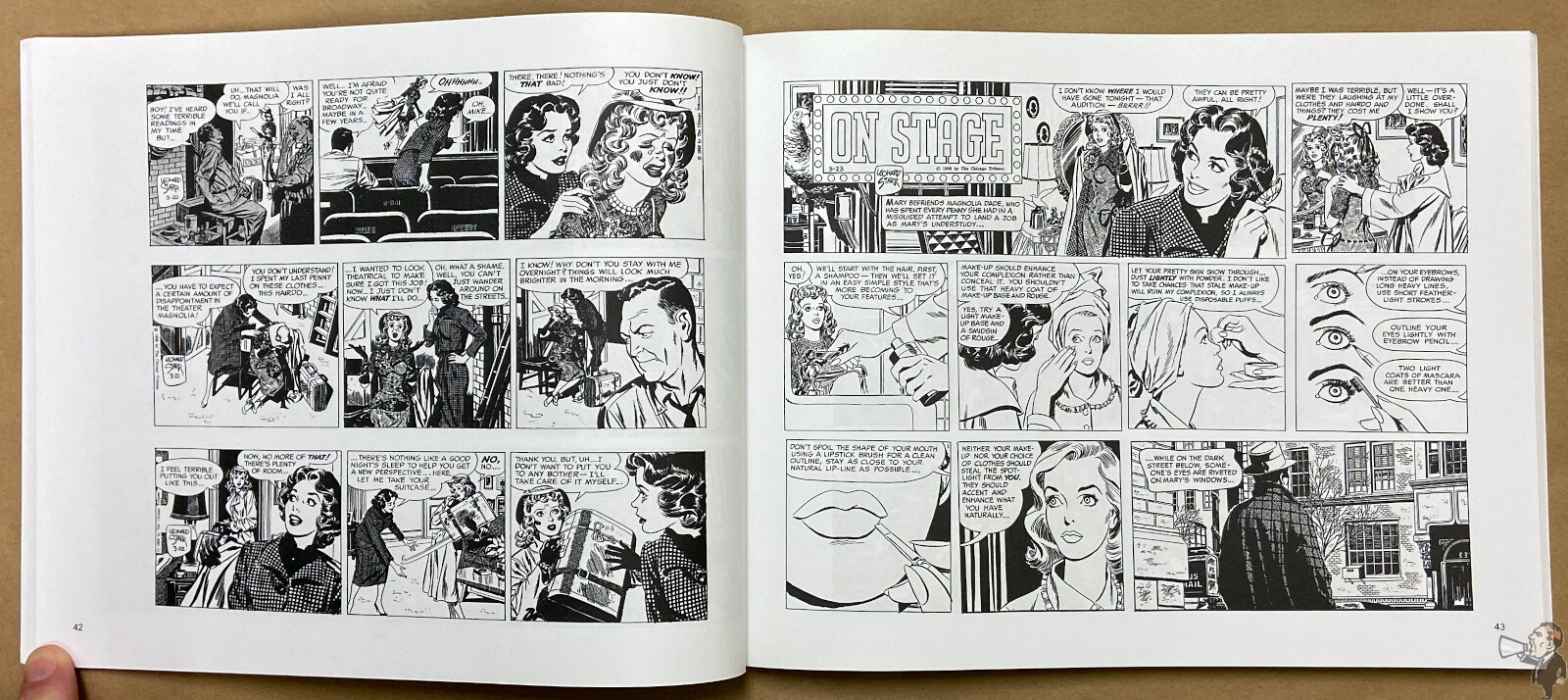
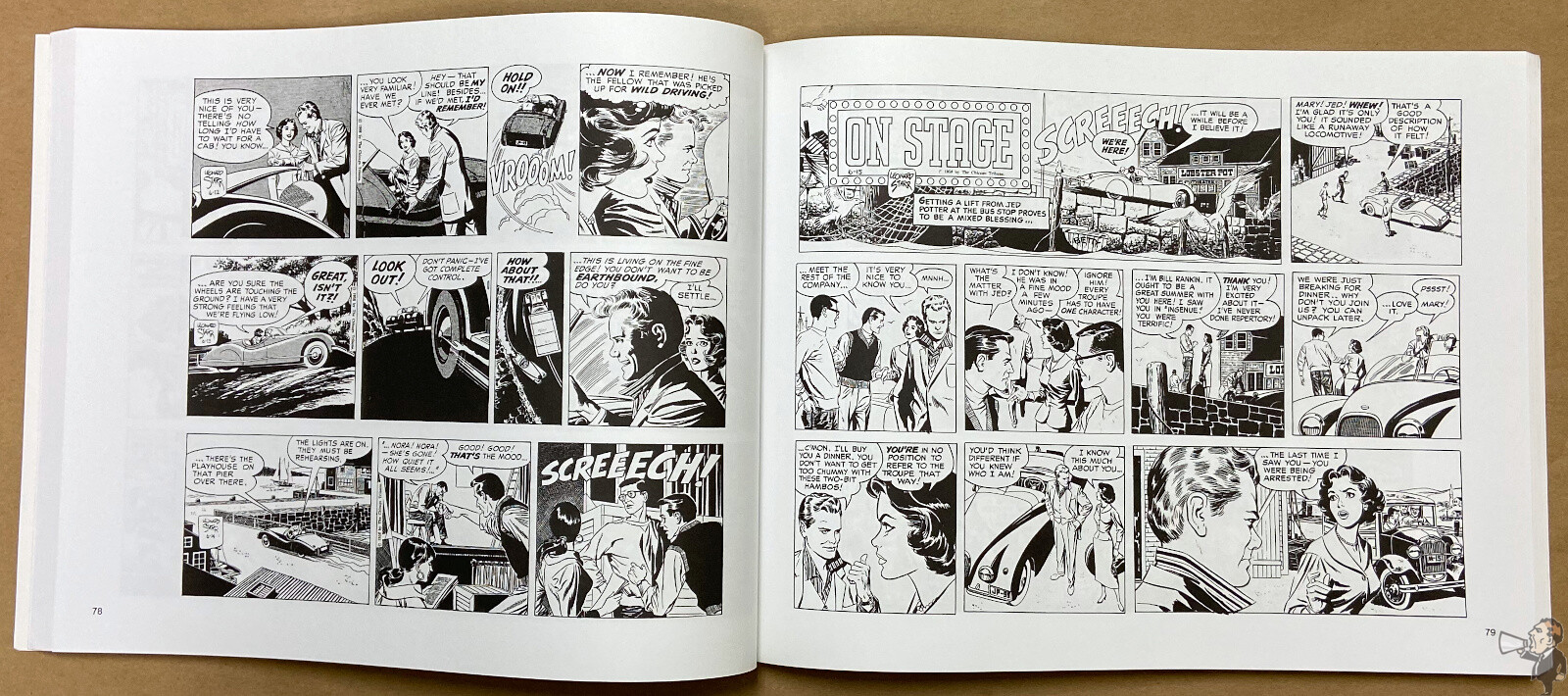
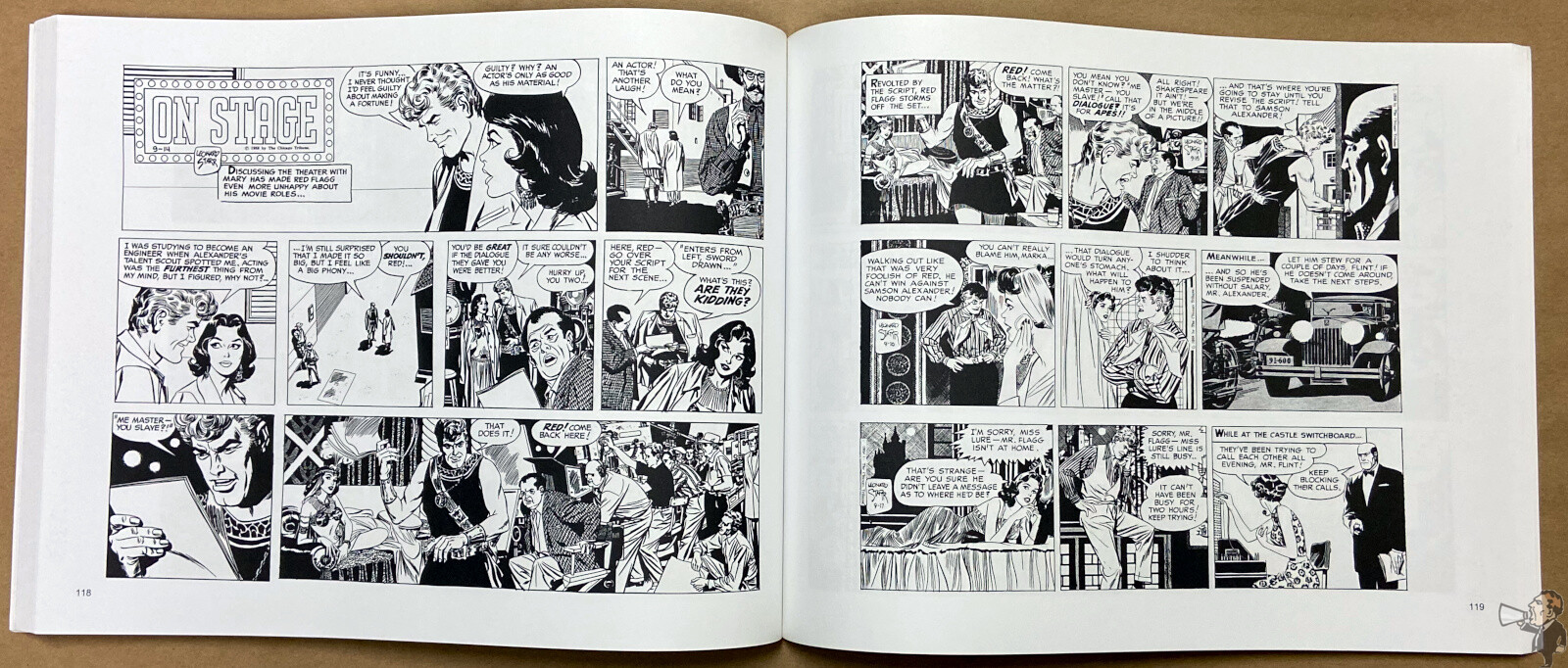
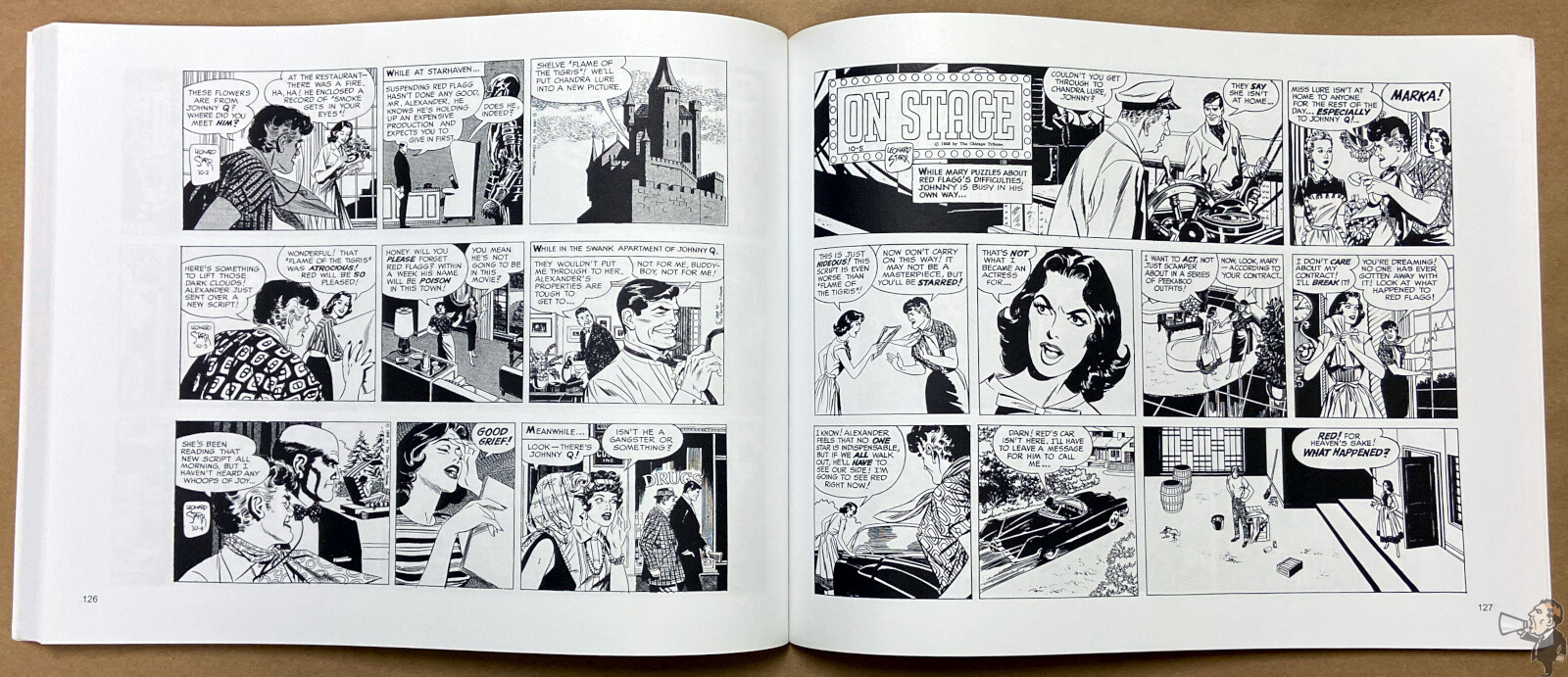
Things take a bizarre turn as Mary is signed a big time contract with Samson Alexander, the star maker. She soon learns it’s a golden cage as all aspects of her life and the other actors in Alexander’s troupe are controlled. It’s a strong statement about the old Hollywood studio system taken to the extreme. Only through a new friendship with possible mobster Johnny Q does she get her contract back as we’re shown behind the curtain. Another mystery storyline as we slowly learn more and more about Alexander, his fixers, and what is entailed in maintaining status.
Johnny Q’s assistance blossoms into something more, for him at least, as he pursues Mary. Back in town, Pete Fletcher re-enters the scene. Romance and old feelings emerge as Johnny tries to be a good friend and Pete deals with his jealousy. This story is all about romance, expectations, and getting the wrong idea. Starr builds it well by having gossip columnist Googan stir the pot at every turn. The true colours of everyone are shown and fences mended.
In case readers were losing interest Starr does a dramatic shift for the final story as Mary travels to London to film a “chiller” with Maximus, the man “with the plastic face”. It’s a film about a ghost and it’s being shot in an old theatre said to be haunted. Accidents start happening and all fingers point to Maximus, but Mary is able to solve it with a twist.
The art is simply stunning. Starr is able to provide living, breathing characters in intricately detailed settings. Not only does he draw classic beauty in Mary, but every character exudes life and humanity in their movements, poses and persona. It’s easy to gloss over how well Starr draws clothing, from elaborate stage costumes to trench coats and pant cuffs. With so many talking head panels it’s amazing how varied and engaging Starr was able to make them.
In this volume Starr reuses panels from the Sunday for the Monday daily, reducing it to fit and slightly altering it from line art for colour to black and white. Starts on page 112 and occurs for four weeks in a row and then sporadically afterward. Before that Starr would redraw the panel, but for this period it appears he’s copying or photostatting it.
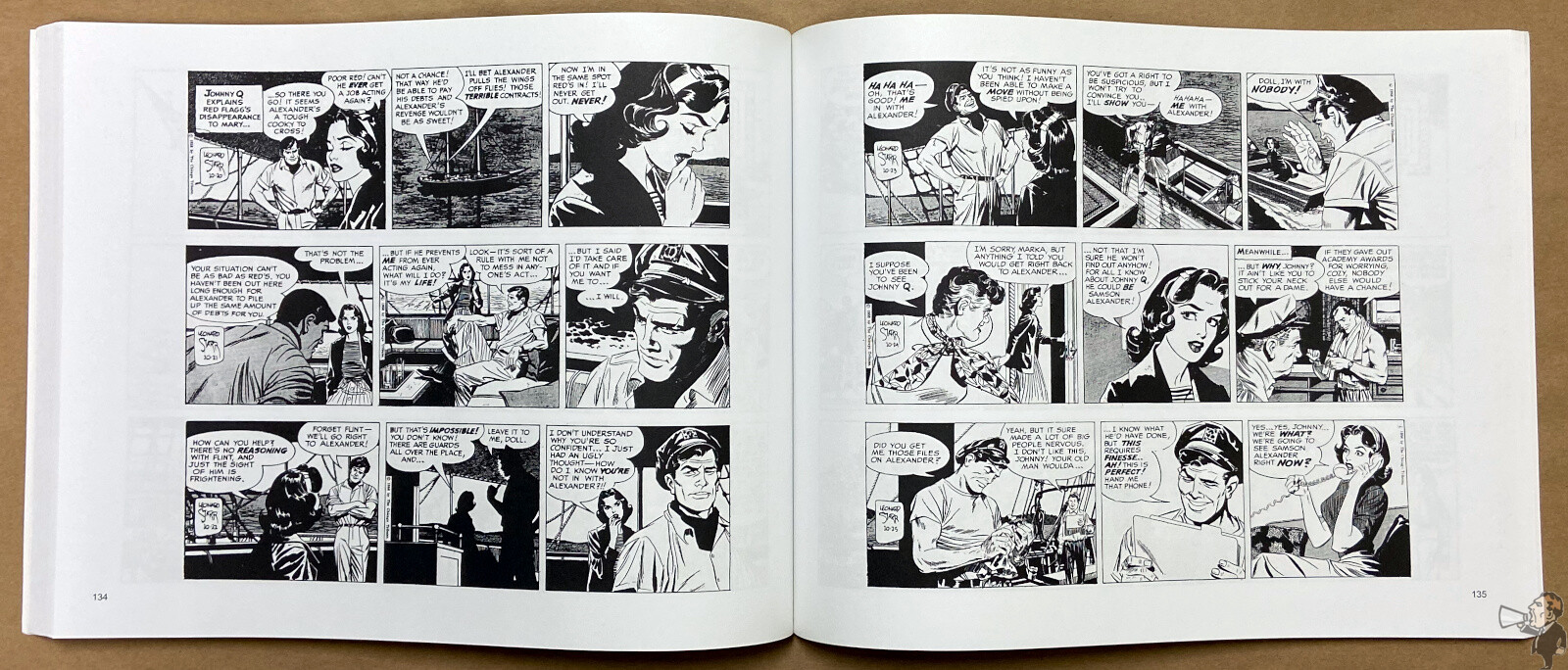
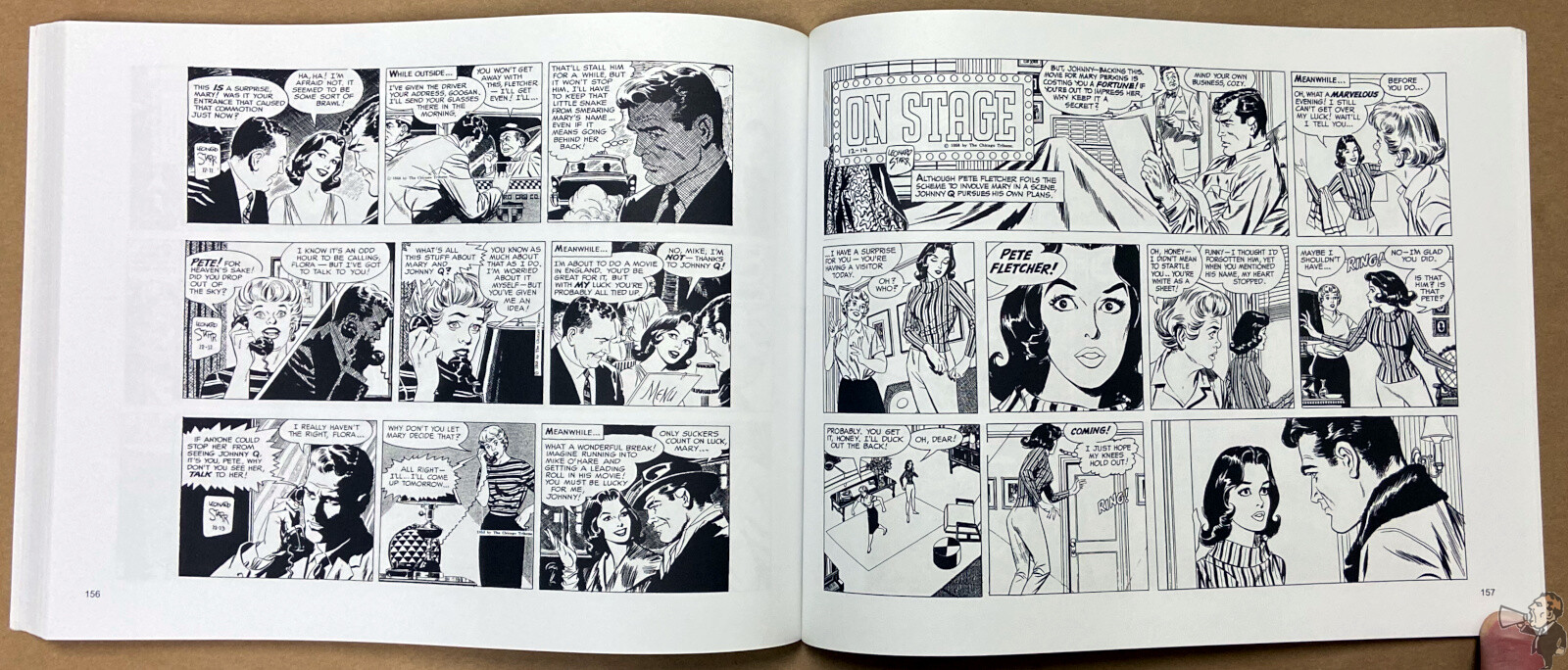
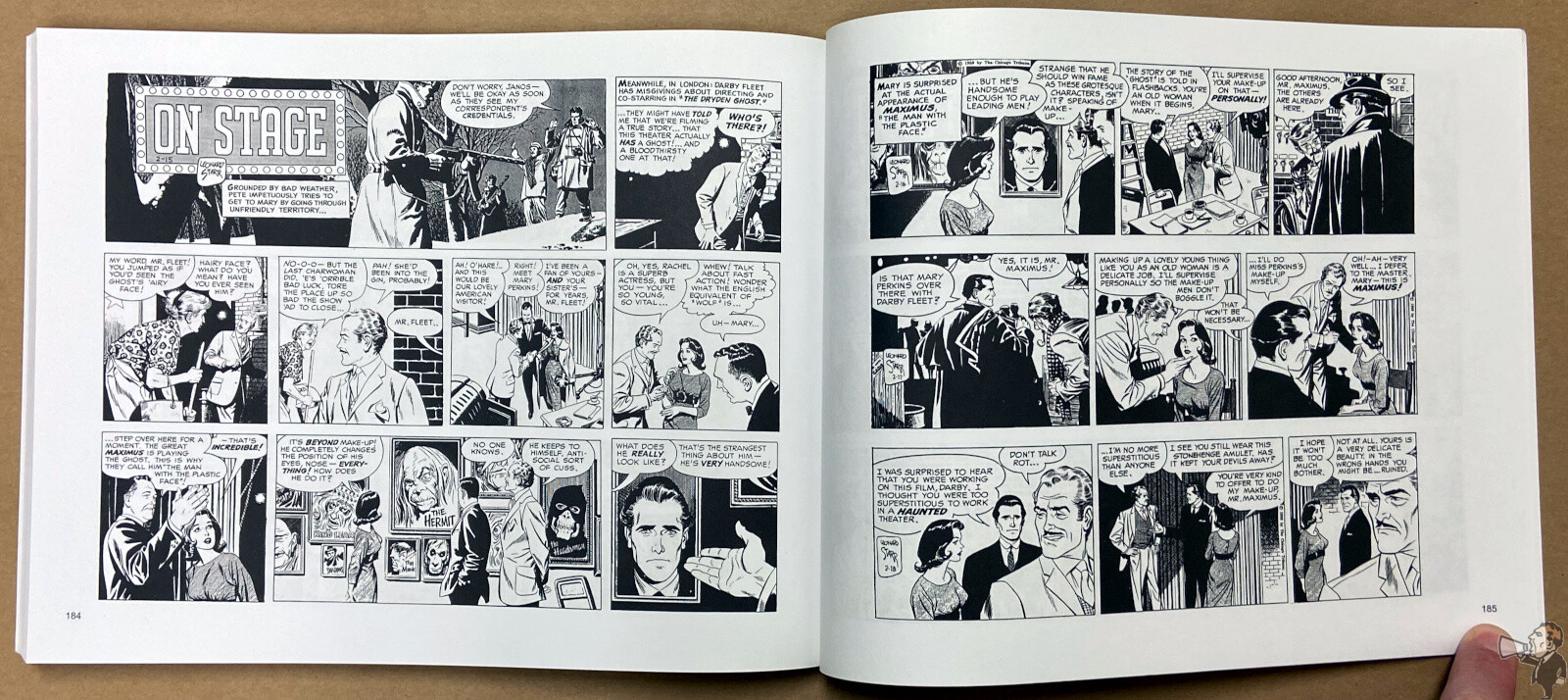
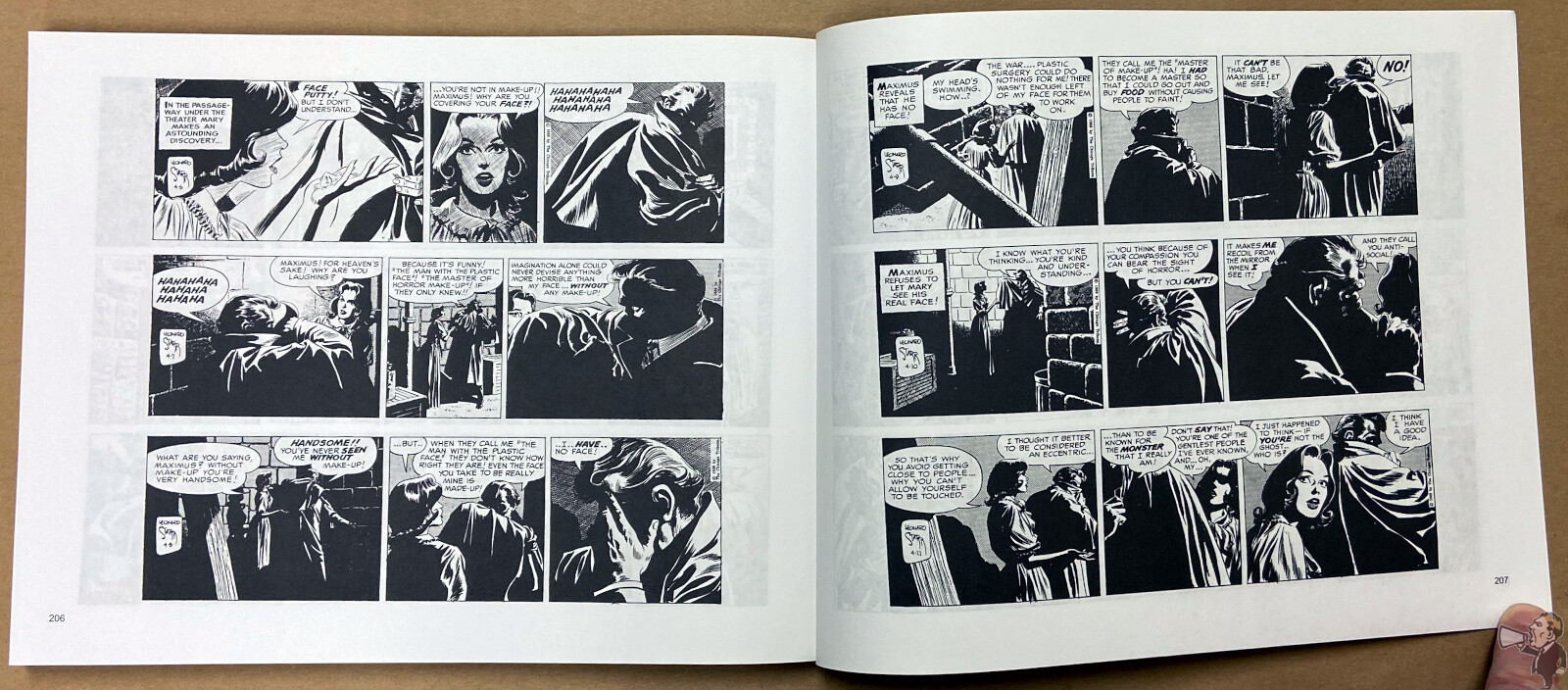
The introduction by Busiek gives a personal touch to readership and makes mention of a sizable collection of original art. Hmm. The interview is from 1971 and Starr states he sees newspaper strips as a play with each week as an act, seven scenes per act with 24 hours between each curtain. This quote struck me.
From Sunday page to Sunday page, you’re making your major plot points, so that you have your rise in development during the week, leading up to the Sunday page, which then has to be recapitulated for those papers that don’t carry your strip on Sunday.
This is a glued binding of light matte paper stock. There is image bleed through but it’s not noticeable while reading. I was gentle with the spine as the glue has dried and aged a light brown.
As with other Classic Comics Press books I’ve reduced the title of the book for simplicity’s sake, removing the dates.
This is currently the most expensive volume of the series as it’s long out of print. Let’s hope Classic Comics Press can get a new printing on the market.

